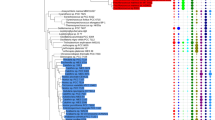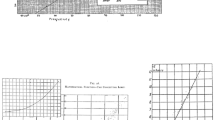Abstract
In the half-century since the C-value paradox (the apparent lack of correlation between organismal genome size and morphological complexity) was described, there have been no explicit statistical comparisons between measures of genome size and organism complexity. It is reported here that there are significant positive correlations between measures of genome size and complexity with measures of non-hierarchical morphological complexity in 139 prokaryotic and eukaryotic organisms with sequenced genomes. These correlations are robust to correction for phylogenetic history by independent contrasts, and are largely unaffected by the choice of data set for phylogenetic reconstruction. These results suggest that the C-value paradox may be more apparent than real, at least for organisms with relatively small genomes like those considered here. A complete resolution of the C-value paradox will require the consideration and inclusion of organisms with large genomes into analyses like those presented here.
Access this chapter
Tax calculation will be finalised at checkout
Purchases are for personal use only
Preview
Unable to display preview. Download preview PDF.
Similar content being viewed by others
References
Avery, O.T., MacLeod, C.M., McCarty, M.: Studies on the Chemical Nature of the Substance Inducing Transformation of Pneumococcal Types: Induction of Transformation by a Deoxyribonucleic Acid Fraction Isolated from Pneumococcus Type III. J. Exp. Med. 79(1), 137–158 (1944)
Watson, J.D., Crick, F.H.C.: A structure for Deoxyribose Nucleic Acid. Nature 171, 737–738 (1953)
Mirsky, A.E., Ris, H.: The deoxyribonucleic acid content of animal cells and its evolutionary significance. J. gen. Physiol. 34, 451–462 (1951)
Thomas, C.A.: The genetic organization of chromosomes. Annu. Rev. Genet. 5, 237–256 (1971)
Cavalier-Smith, T. (ed.): The evolution of genome size. John Wiley, New York (1985)
Gregory, T.R.: Coincidence, coevolution, or causation? DNA content, cell size, and the C-value enigma. Biol. Rev. 76, 65–101 (2001)
Pagel, M., Johnstone, R.A.: Variation across species in the size of the nuclear genome supports the junk-DNA explanation for the C-value paradox. Proc. R. Soc. Lond. 249, 119–124 (1992)
Goin, O.B., Goin, C.J., Bachmann, K.: DNA and amphibian life history. Copeia, 532–540 (1968)
Ohno, S.: Evolution by gene duplication. Springer, New York (1970)
Lovejoy, A.O.: The Great Chain of Being, p. 376. Harvard University Press, Cambridge (1936)
Cavalier-Smith, T.: Nuclear volume control by nucleoskeletal DNA, selection for cell volume and cell growth rate, and the solution of the DNA C-value paradox. J. Cell Sci. 43, 247–278 (1978)
Cavalier-Smith, T.: r- and K-tactics in the evolution of protist developmental systems: cell and genome size, phenotype diversifying selection, and cell cycle patterns. Biosystems 12, 43–59 (1980)
Sessions, S.K., Larson, A.: Developmental correlates of genome size in plethodontid salamanders and their implications for genome evolution. Evolution 41, 1239–1251 (1987)
Gregory, T.R.: Genome size and developmental complexity. Genetica 115, 131–146 (2002)
Gregory, T.R.: Macroevolution, hierarchy theory, and the C-value enigma. Paleobiology 30(2), 179–202 (2004)
Doolittle, W.F., Sapienza, C.: Selfish genes, the phenotype paradigm and genome evolution. Nature 284, 601–603 (1980)
Orgel, L.E., Crick, F.H.C.: Selfish DNA: the ultimate parasite. Nature 284, 604–607 (1980)
Nelson, K.E., Paulsen, I.T., Heidelberg, J.F., Fraser, C.M.: Status of genome projects for nonpathogenic bacteria and archaea. Nature Biotechnology 18, 1049–1054 (2000)
McShea, D.W.: Functional complexity in organisms: Parts as proxies. Biol. Philos 15(5), 641–668 (2000)
Sneath, P.H.A.: Comparative biochemical genetics in bacterial taxonomy. In: Leone, C.A. (ed.) Taxonomic Biochemistry and Serology, pp. 565–583. Ronald Press, New York (1964)
Valentine, J.W., Collins, A.G., Porter Meyer, C.: Morphological complexity increase in metazoans. Paleobiology 20(2), 131–142 (1994)
Carroll, S.B.: Chance and necessity: the evolution of morphological complexity and diversity. Nature 409(6823), 1102–1109 (2001)
Bell, G., Mooers, A.O.: Size and complexity among multicellular organisms. Biol. J. Linn. Soc. 60, 345–363 (1997)
Bonner, J.T.: The evolution of complexity by means of natural selection, p. 260. Princeton University Press, Princeton (1988)
Harvey, P.H., Pagel, M.D.: The comparative method in evolutionary biology. Oxford University Press, Oxford (1991)
Felsenstein, J.: Phylogenies and the comparative method. Am. Nat. 125, 1–15 (1985)
Garland Jr., T., Harvey, P.H., Ives, I.R.: Procedures for the analysis of comparative data using phylogenetically independent contrasts. Syst. Biol. 41, 18–32 (1992)
Valades, D.: Rhetorica Christiana. Pervsiae, apud Petrumiacobum Petrutium 10 (1579)
Fletcher, A.: Gender, Sex, and Subordination in England 1500-1800, p. 442. Yale University Press, New Haven (1995)
CBS Genome Atlas Database, Center for Biological Sequence Analysis Lyngby, Denmark (2003), http://www.cbs.dtu.dk/services/GenomeAtlas/
GOLD Genomes OnLine DataBase, Integrated Genomics, Chicago, IL (2003), http://igweb.integratedgenomics.com/GOLD/
Martins, E.P.: COMPARE, version 4.4. Computer programs for the statistical analysis of comparative data, Department of Biology, Indiana University, Bloomington IN (2001)
National Center for Biotechnology Information, National Library of Medicine, Washington, D.C (2003), http://www.ncbi.nlm.nih.gov/
Jeanmougin, F., et al.: Multiple sequence alignment with Clustal X. Trends Biochem. Sci. 23, 403–405 (1998)
Swofford, D.L.: PAUP*, Phylogenetic analysis using parsimony (*and other methods), Sinauer Associates: Sunderland, Massachusetts (1998)
Brown, J.R., et al.: Universal trees based on large combined protein sequence data sets. Nat. Genet. 28, 281–285 (2001)
Nelson, K.E., et al.: Status of genome projects for nonpathogenic bacteria and archaea. Nature Biotechnology 18(10), 1049–1054 (2000)
Marcus, J.M., McCune, A.R.: Ontogeny and phylogeny in the northern swordtail clade of Xiphophorus. Syst. Biol. 48(3), 491–522 (1999)
Rees, H., Jones, R.N.: The origin of the wide species variation in nuclear DNA content. Int. Rev. Cytol. 32, 53–92 (1972)
Sparrow, A.H., Price, H.J., Underbrink, A.G.: A survey of DNA content per cell and per chromosome of prokaryotic and eukaryotic organisms: some evolutionary considerations. Brookhaven Symp. Biol. 23, 451–494 (1972)
Changizi, M.A.: Universal Scaling Laws for Hierarchical Complexity in Languages, Organisms, Behaviors and other Combinatorial Systems. J. Theor. Biol. 211, 277–295 (2001)
Hedges, S.B., et al.: A molecular timescale of eukaryote evolution and the rise of complex multicellular life. BMC Evol. Biol. 4, 2 (2004), doi:10.1186/1471-2148-4-2
Author information
Authors and Affiliations
Editor information
Editors and Affiliations
Rights and permissions
Copyright information
© 2005 Springer-Verlag Berlin Heidelberg
About this paper
Cite this paper
Marcus, J.M. (2005). A Partial Solution to the C-Value Paradox. In: McLysaght, A., Huson, D.H. (eds) Comparative Genomics. RCG 2005. Lecture Notes in Computer Science(), vol 3678. Springer, Berlin, Heidelberg. https://doi.org/10.1007/11554714_9
Download citation
DOI: https://doi.org/10.1007/11554714_9
Publisher Name: Springer, Berlin, Heidelberg
Print ISBN: 978-3-540-28932-6
Online ISBN: 978-3-540-31814-9
eBook Packages: Computer ScienceComputer Science (R0)




